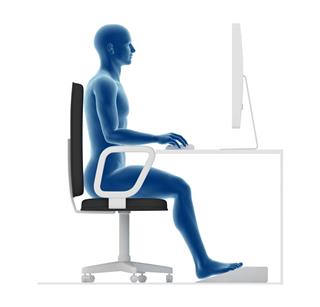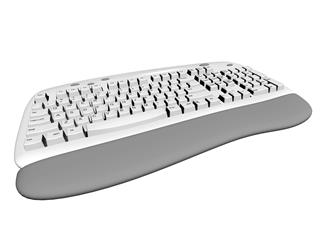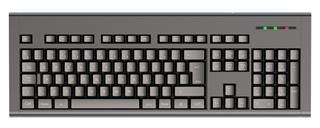
Computers are becoming essential to all companies, irrespective of their field of operation. This has increased the importance of typing, and particularly typing fast. Some useful suggestions and tips to achieve this skill are given below.
There are many people who are not satisfied with their keyboard typing speed and desperately want to improve it. However, you should understand that increasing your typing speed is possible, only if you practice regularly. You should try to type fast every time you are taking your typing speed lessons.
At the same time, you should also make sure that you are not making any spelling mistakes, as this can only add to your worries. By typing fast, you can complete your work in relatively less time. Be it writing an email, drafting a project proposal, or writing an article, a good typing speed helps you finish the work faster. Since most professions involve working on a computer, the ability to type fast can help you get the tag of ‘fast achiever’ at your workplace. Here we give you some useful tips for typing fast; that too, without looking at the keyboard.
» Understand the Location of the Keys
The first suggestion would be to understand and memorize the location of all the keys on the computer keyboard. Unless, you know exactly where a letter or number key is, you would not be able to type it without looking down. You should observe the keyboard layout time and again, and try to recollect the location of every key. You should look at the computer screen and try typing all the letters correctly, till you get all the letters and the numbers right. There are many ways of remembering the positions of the keys.
The first row of keys from the top can be remembered as Q – W – E – R – T – Y – U – I – O – P. The second row includes A – S – D – F – G – H – J – K – L and the third row Z – X – C – V – B – N – M. Remembering the function keys is easy – they are located in the topmost row and are in the increasing order – F1, F2, F3 … The main challenge is of remembering locations of square brackets, round brackets, and the greater-than and lesser-than signs. However, with sufficient and consistent practice, you will definitely be able to memorize these locations. Remembering the locations of keys like ‘Tab’, ‘Caps Lock’, ‘Shift’, and ‘Alt’ is easy, as these are on the extreme left of the keyboard. The space bar is the key that we use the most while typing, to give spaces between words. It is located almost centrally in the last row of the keyboard.
The QWERTY keyboard is what most of us are used to. In a case of having to switch to a Dvorak layout, the typing speed shouldn’t be hampered. For this, practice using the Dvorak keyboard as well. The intent behind its design was ease of use. With punctuation marks and vowels on the left and consonants on the right side, the Dvorak layout helps one type faster than on a QWERTY keyboard.
» Use All 10 Fingers to Type
Make it a habit to use all ten fingers while typing. If you have been using two fingers to type, get rid of this habit immediately. If you look at the keyboard carefully, you will notice that the ‘F’ and ‘J’ keys have raised bumps. This is so because these keys are considered to be the ‘reference keys’. Place your index fingers on both these keys and place the remaining fingers accordingly. Once you get used to the finger placement, it will be easier to type without looking at the keyboard.
Type each letter or number with the finger that is reserved for it. For example, with the two index fingers reserved for the F and J keys, the next three fingers should be used to type the K, L, and semicolon keys (right hand) and the D, S, and A keys (left hand).
When capitalizing a letter, the little finger should be used to hit the Shift key on the opposite side of the letter to be capitalized. For example, to capitalize the letter P, which is on the right side, the Shift key on the left should be used.
The Space bar should be pressed with one of the thumbs.
The ring finger and little finger need to be trained specially, as they are a little less developed than the other three.
For acquiring speed, there should be a specific rhythm in typing. The interval between any two keystrokes should be equal. This helps you type faster and maintain a uniform speed.
» Maintain a Good Posture
First and foremost, sit straight and keep your back straight. Keep your elbows at a right angle. Maintain a position such that you put the least amount of strain on your shoulders, arms, and wrist muscles. A good posture can help you keep up your energy levels, thus increasing your work output. It will also help in preventing any sort of injury to the muscles in use while typing. This point is commonly overlooked, but can prove to be extremely useful and effective.
The keyboard should be at a comfortable height for the fingers. The wrists should be a little elevated and provided with support if necessary. The hands should rest near the base of the keyboard and their unnecessary movement should be avoided. Any unnecessary effort should be avoided, which includes not pressing the keys forcefully. A light stroke or touch reduces both the effort and the time spent in typing.
» Don’t Look at the Keyboard
The practice of typing without looking at the keyboard is also known as ‘touch typing’. Initially, this practice may result in a lot of mistakes, but with time you will get used to the placement of the keys. After you learn this, you will definitely notice an increase in your typing speed. This is not easy to learn though, and you may require weeks of hard work to get used to it. At the start, it might be tempting for you to look down at the keyboard, so as to avoid any mistakes. Avoid doing so. The goal should be to type accurately and with a good speed. First achieve typing with accuracy without looking at the keyboard and then aim for a higher speed.
» Practice, Practice, Practice …
Lots of practice is the key to increasing your typing speed. The more you practice, the more your accuracy and speed will be. The above-mentioned tips can only be mastered through consistent and thorough practice. Initially, you can try typing words without looking at the keyboard. Once you get the words right, try to type small sentences, and then move on to longer ones. Slowly and steadily, you will be able to type the entire body of a text without looking at the keyboard.
You should remember that you will not be able to type fast unless you concentrate and stay focused on achieving what you want to. Practice and hard work can guarantee you an increase in your typing speed.



